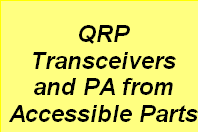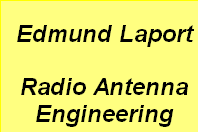

Antentop is FREE e-magazine devoted to Antennas and Amateur Radio an
Special page devoted to
Universal RF Amplifier of a QRP- Transceiver

Custom Search
|
ANTENTOP-
01- 2009, # 011 |
Universal
RF Amplifier of a QRP- Transceiver |
|
|
|
|
|
By: Igor Grigorov, UZ3ZK Credit Line: Radiokonstruktor # 7, 1999, pp. 2-3. |
|
QRP design- it is very specific design, where ham wants
to use as little parts as possible. The amplifier gives the possibility
because it can be used twice- like RF- PA and like RF- RX- Amplifier.
Supply Voltage: 12-V Input/Output Impedance: Close to 100- Ohm (amplifier was designed to work with 75-Ohm Coaxial Cable). Figure 1 (p.71) shows schematic of the amplifier. R4C3 and R5C4 are lowered the gain but
rise the stability. Sometimes (when the Amplifier is used at range
1.8- 14.0- MHz and matched antenna is used) it is possible do
not install them. Gain is raised up to 25 (Pout/Pin) at this case.
With the transistors (KT606A, DATA for the transistors at: http://www.antentop.org/008/bip008.htm).
The amplifier work out up to 1-Wtts output power. However, do
not drive into the amplifier more the 50-mWtts because the output
waveform signal may be distorted. |
Figure
2 (p.72) shows the commutation between a QRP- transceiver
and the amplifier. For switching RX/TX a
two small relays are used. At TX mode the Amplifier should be matched
with a QRP- Transceiver. Separate circuit (like L or pi- circuit)
for matching transceiver with antenna is used for each band. At
RX mode the matching circuit is used for filtering of the input
signal. At my design the Amplifier at RX- mode was loaded on to
balanced diode mixer.
Design: The amplifier is assembled on a PCB by sizes 40x 50-mm.
Two holes for VT1 and VT2 are drilled at the PCB. The transistors
are installed on aluminum plate with sizes equal to PCB. Parts-
resistors/transformers/capacitors are installed on the transistors
pins and small circles cut on the PCB. Try to keep the leads from
the parts as short as possible. Relays are installed near output
and mixer of the QRP- Transceiver and connected with the Amplifier
with a thin Coaxial Cable. 73! Igor
Grigorov, va3znw |
|
|
|
|
Page 70 |
|
 |
 |
 |
 |
Just for Fun:

Powered byIP2Location.com
Thanks for your time!
Last Updated:
February 2, 2020 22:04





